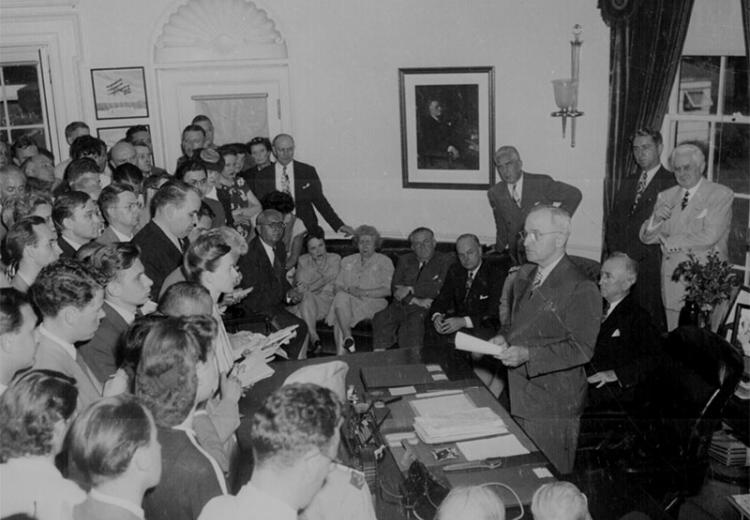Lesson 4: The New Order for "Greater East Asia"

At the White House, President Truman Announces Japan's Surrender. Washington, DC, August 14, 1945.
For American diplomacy, the war against Japan was not just about the destruction of Japanese supremacy in the Pacific, China, and Southeast Asia. The ultimate issue was just what would replace Japan's imperial design of a "Greater East Asia Co-Prosperity Sphere." President Roosevelt and his diplomats saw the conflict as an opportunity to end not simply Japan's imperialism in the area, but also that of Britain, France, and the Netherlands. The Japanese conquests of 1942 had already expelled European colonialists. As Japan was forced to retreat, indigenous nationalist movements would begin to stake their own claims to power. The American anti-imperialist vision was motivated in part, no doubt, by an economic interest in formerly closed Asian markets, but in the main it was the product of a long-held American faith in freedom and self-determination. This vision was enshrined in the Atlantic Charter, a document of far greater importance to Americans than to their British or Soviet allies. As the war in the Far East moved toward a close, American diplomacy had to grapple with the differing visions and objectives of other important partners in the Grand Alliance.
This lesson plan focuses on two major postwar problems—the future of China and (using French Indochina as a test case) the future of Western imperialism in Southeast Asia. Teachers with limited time may wish to select only one of these problems for class exercises and discussions. The documents relating to each have been grouped together in order to facilitate such an option.
Guiding Questions
Was the American vision for postwar East and Southeast Asia flawed?
If so, in what way?
Learning Objectives
Explain the differing viewpoints with which the USSR, the United States, and Britain approached the issue of European imperialism.
Explain the ways in which the USSR, the United States, and Britain approached the issue of the future of China and define the postwar goals of each nation.
Evaluate whether in these cases American policy was "realistic," i.e., in the best interests of the United States and/or likely to be achieved in the postwar world.
